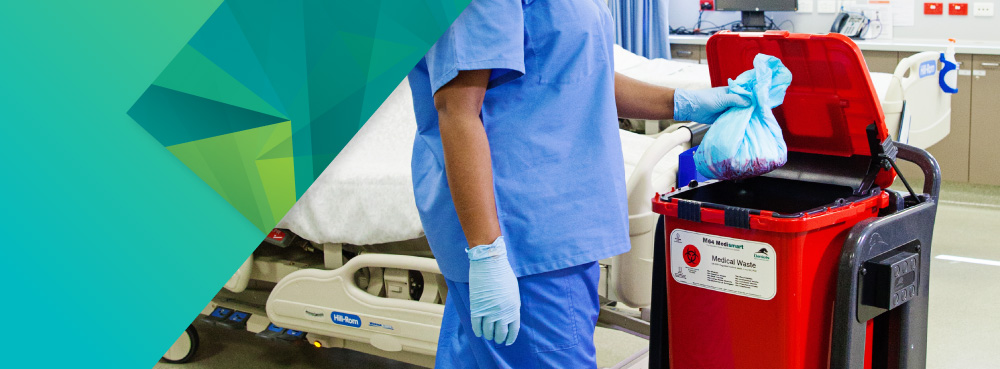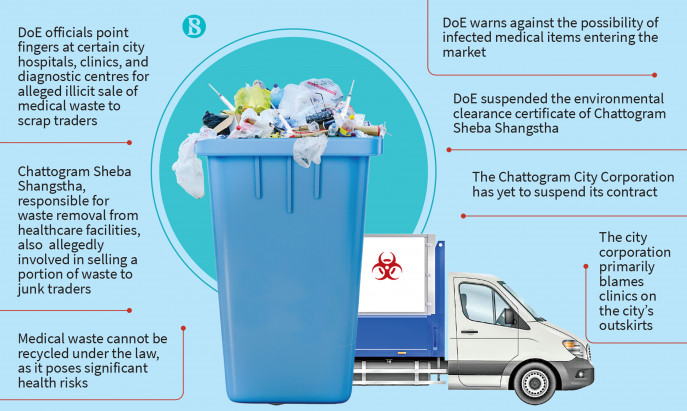Medical Waste Removal Quality: Elevating Safety And Security Standards in Your Center
Medical Waste Removal Quality: Elevating Safety And Security Standards in Your Center
Blog Article
Remain Ahead of Rules: Expert Recommendations on Medical Garbage Disposal
In a world where the health care market is continuously advancing, it is imperative for medical facilities to stay in advance of policies when it concerns the appropriate disposal of clinical waste. With stringent standards and constant governing modifications, it can be testing to browse the complexities of this process. Nevertheless, with skilled advice, facilities can make sure conformity and mitigate dangers related to inappropriate waste disposal. From comprehending the various groups of medical waste to carrying out the right collection and partition methods, this discussion will certainly give important insights and workable pointers to aid centers stay in advance of laws in the ever-changing landscape of clinical garbage disposal.
Recognizing Clinical Waste Categories
Recognizing clinical waste classifications is important for proper disposal and management in medical care centers. Clinical waste describes any type of waste produced by healthcare tasks that may present a danger to public wellness or the setting. It is crucial to classify medical waste precisely to ensure its safe handling, disposal, treatment, and transportation.
There are a number of categories of medical waste that health care centers require to be accustomed to. The most typical groups consist of infectious waste, pathological waste, sharps waste, pharmaceutical waste, and chemical waste. Each category has certain guidelines and regulations for its correct monitoring and disposal.
Pathological waste refers to human tissues, body organs, or body components that call for special handling and disposal. Drug waste makes up expired, extra, or polluted medicines that require cautious handling and disposal.
Staying Up-To-Date With Regulatory Changes
Staying existing with governing adjustments is critical for health care centers to guarantee conformity and appropriate monitoring of medical garbage disposal. medical waste removal near me. With guidelines constantly advancing, it is important for medical care facilities to stay updated to stay clear of charges, penalties, and prospective injury to the environment and public health and wellness
To remain in advance of governing changes, healthcare facilities must develop a system for tracking and monitoring updates. This can be done by subscribing to regulatory e-newsletters, going to seminars and workshops, and actively joining industry organizations. Furthermore, facilities should mark an employee or group in charge of staying notified and sharing info to appropriate stakeholders.
Normal interaction with regulative companies is additionally vital. Medical care facilities ought to establish partnerships with local, state, and federal agencies to guarantee they understand any changes in regulations that might affect their waste management practices. This can be done via regular conferences, participation in public comment periods, and positive engagement with governing firms.
Additionally, health care centers must take into consideration partnering with waste management business that focus on clinical waste disposal (medical waste disposal services with WasteX). These business are usually well-versed in the latest laws and can supply guidance and assistance to ensure compliance
Applying Appropriate Collection and Partition Approaches
To properly manage medical waste disposal, health care facilities should establish correct collection and partition approaches based on regulative standards. Executing these approaches guarantees the risk-free handling and disposal of potentially unsafe products, safeguards the environment, and minimizes the threat of injuries and infections to medical care employees and the general public.
Appropriate collection and segregation techniques involve using marked containers and classifying systems. Medical care Read Full Report facilities should provide plainly classified containers for different types of clinical waste, such as sharps, infectious waste, pharmaceutical waste, and non-hazardous waste. These containers should be color-coded and plainly marked to avoid complication and promote very easy recognition.
Furthermore, healthcare centers must train their team on the right procedures for gathering and segregating clinical waste. This consists of educating them on the various kinds of waste, the proper containers to use, and the importance of adhering to guidelines and regulations. Routine training sessions and refresher training courses ought to be performed to make sure that personnel continue to be up-to-date on ideal practices.
In addition, healthcare centers ought to develop a system for regular collection and disposal of clinical waste. This might involve partnering with certified waste management business that specialize in medical garbage disposal. These companies will ensure that the gathered waste is transported and taken care of in compliance with regulative needs.
Choosing the Right Disposal Approaches

Incineration is one of the most effective and common methods for dealing with certain sorts of clinical waste, such as pathological waste and sharps. It entails the regulated burning of waste at heats, decreasing it to ash. Incineration can release damaging contaminants into the air and contribute to air contamination.

Various other disposal techniques include chemical therapy, microwave treatment, and landfilling. Chemical treatment entails using chemicals to neutralize the waste and decontaminate. Microwave therapy utilizes microwave power to warm and decontaminate the waste. Landfilling includes hiding the waste in a designated land fill area (medical waste disposal services with WasteX). Landfilling ought to be the last resort due to the prospective danger of contamination to soil and groundwater.
Guaranteeing Compliance With Paperwork and Training
After thoroughly thinking about the proper disposal approaches for clinical waste, health care centers should guarantee compliance with guidelines and decrease ecological impact by executing effective documentation and training treatments. This action is important in preserving a secure and lasting environment for both medical care employees and the public.

Health care workers that take care of clinical waste needs to obtain ideal training on waste partition, taking care of, and disposal treatments. By supplying detailed training, health care facilities can empower their staff to make informed choices and decrease the threat of incorrect waste disposal.
Final Thought
In final thought, staying ahead of laws in clinical garbage disposal is important for health care facilities. medical waste removal services. Comprehending the different groups of clinical waste, staying upgraded with governing modifications, executing proper collection and partition techniques, choosing the ideal disposal techniques, and guaranteeing conformity with paperwork and training are all essential actions. By adhering to these guidelines, medical care companies can effectively get rid of and handle of medical waste in a liable and risk-free fashion
From comprehending the various classifications of clinical waste to carrying out the right collection and partition methods, this conversation will supply valuable understandings and workable suggestions to assist centers stay in advance of regulations in the ever-changing landscape of medical waste disposal. - medical waste disposal services with WasteX
The most common categories include contagious waste, pathological waste, sharps waste, pharmaceutical waste, and chemical waste. Health care centers must give plainly classified containers for various kinds of clinical waste, such as sharps, contagious waste, pharmaceutical waste, and non-hazardous waste. Healthcare facilities need to develop a thorough system to tape and track all facets medical waste disposal services with WasteX of clinical waste disposal, including types of waste generated, quantities, and disposal methods used. Healthcare workers who handle clinical waste needs to obtain ideal training on waste partition, managing, and disposal treatments.
Report this page